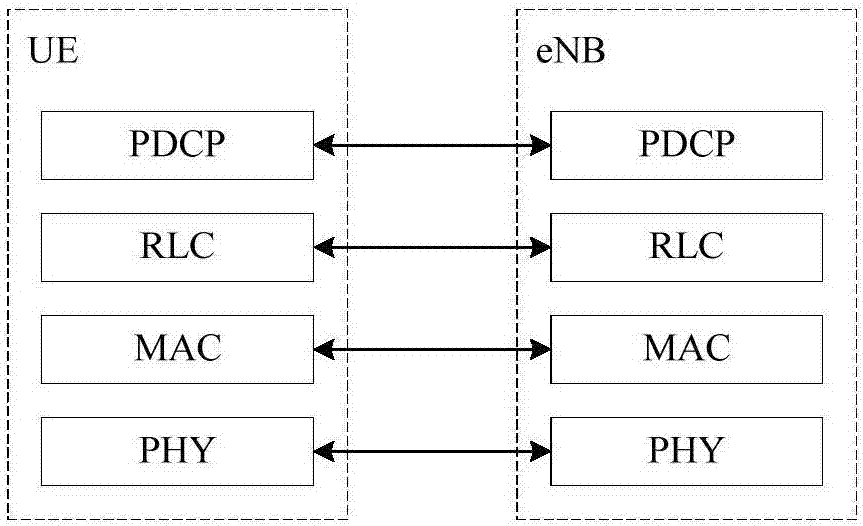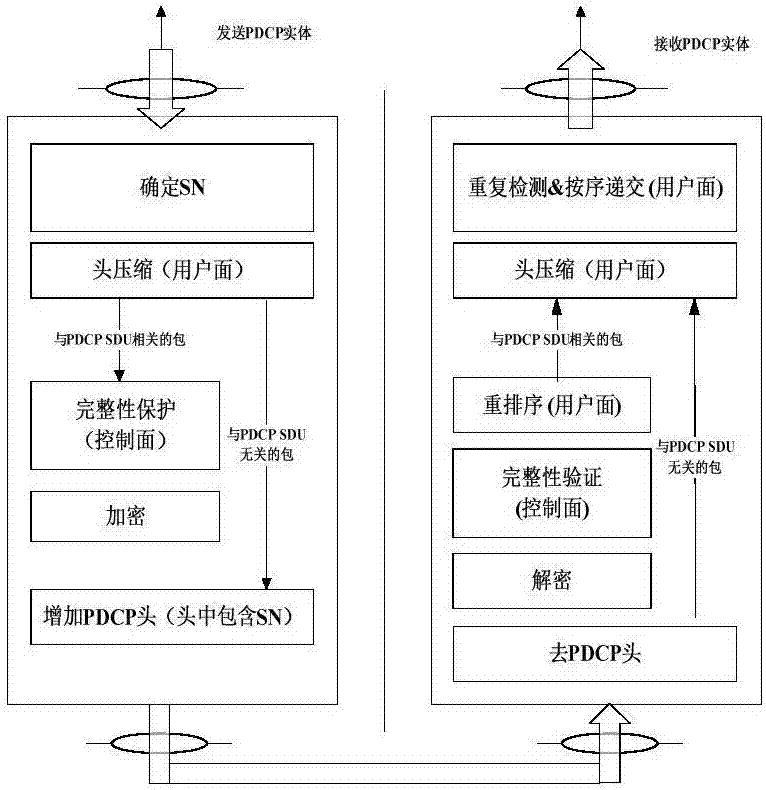Method and device for decompressing and compressing uplink data
A data compression and decompression technology, applied in the field of communication, can solve the problems that the base station and terminal compression buffer and decompression buffer cannot be guaranteed to be consistent, and the reliability of uplink data compression cannot be guaranteed.
- Summary
- Abstract
- Description
- Claims
- Application Information
AI Technical Summary
Problems solved by technology
Method used
Image
Examples
Embodiment 1
[0160] Example 1: There are three fields in the UDC header
[0161] see Figure 10 , a UDC header format includes the following information:
[0162] Indicates whether to perform UDC compression bit field (U: 1 bit);
[0163] The bit field indicating whether the decompression buffer is reset (N: 1 bit);
[0164] Indication bit field for decompression buffer check (C information: 6 bits).
[0165] The PDCP layer of the terminal performs UDC compression on the data sent by the upper layer. If it is determined to send the compressed data packet to the network, set U to 1, and superimpose the data in the compressed buffer area before compression, and fill the last 6 bits of information into the UDC C domain.
[0166] If it is determined not to compress the packet data, then set U to 0. The C field can be filled with a default value or an arbitrary value, and can also be the superimposed last 6 bits of the compressed buffer area.
[0167] If the terminal needs to reset the co...
Embodiment 2
[0170] Example 2: There are four fields in the UDC header
[0171] see Figure 11 , a UDC header format includes the following information:
[0172] Indicates whether to perform UDC compression bit field (U: 1 bit);
[0173] Indicates whether the decompression buffer is reset or not (N: 1 bit)
[0174] Whether to enter the indication bit field of the decompression cache area (I: 1 bit)
[0175] Indication bit field (C information: 6 bits) for decompression buffer check;
[0176] Similar to the foregoing embodiment 1, usages of the U field, N field, and C field in Embodiment 2 are the same. The usage of the above-mentioned I field is introduced below. The I domain indicates whether the packet data will enter the decompression buffer. Regardless of whether the data packet is compressed or not, once I is set to 1, the base station will press the uncompressed data packet (when U is 0) or the decompressed data packet (when U is 1) into the decompression buffer.
Embodiment 3
[0177] Example 3: There are 5 fields in the UDC header
[0178] see Figure 12 , a UDC header format includes the following information:
[0179] Indicates whether to perform UDC compression bit field (U: 1 bit);
[0180] Indicates whether the buffer area is reset or not (N: 1 bit)
[0181] Indicates whether to enter the buffer area bit field (I: 1 bit)
[0182] Indication bit field for buffer check (C information: 4 bits);
[0183] Reserved bit field (R: 2 bits)
[0184] The usage of the U, I and C fields is the same as that of the above-mentioned Embodiment 1 and Embodiment 2, except that the 4-bit C field is used in this embodiment. There are two R field bits that have no defined function for the time being and are reserved for future use.
PUM
 Login to View More
Login to View More Abstract
Description
Claims
Application Information
 Login to View More
Login to View More - R&D
- Intellectual Property
- Life Sciences
- Materials
- Tech Scout
- Unparalleled Data Quality
- Higher Quality Content
- 60% Fewer Hallucinations
Browse by: Latest US Patents, China's latest patents, Technical Efficacy Thesaurus, Application Domain, Technology Topic, Popular Technical Reports.
© 2025 PatSnap. All rights reserved.Legal|Privacy policy|Modern Slavery Act Transparency Statement|Sitemap|About US| Contact US: help@patsnap.com



